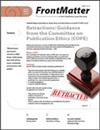黑蛛和蛛蛛属蜘蛛对Araneus蜘蛛的特异性寄主利用(膜翅目:伊蚊科)
IF 0.9
3区 农林科学
Q3 ENTOMOLOGY
引用次数: 1
摘要
摘要在所研究的地区,伊蚊寄生蜂Sinarachna nigricornis(Holmgren,1860)仅与Araneus sturmi(Hahn,1831)有关。A.sturmi的正常捕获球网始终是垂直的,在实验室条件下具有18个半径和9个螺旋的中值。当蜘蛛没有建立捕捉网时,它们会建立休息和蜕皮网,由提供的树枝末端之间的几根线组成。未经寄生的蜘蛛与被初龄拟寄生物幼虫寄生的蜘蛛在辐射和螺旋数量上没有显著差异。鲟鱼在黑腹蛛的操纵下构建了一个改良的茧网,为寄生蜂幼虫化蛹服务。黑腹蛛在其倒数二龄幼虫诱导的茧网结构中表现出较高的可塑性。最常见的茧网是3D结构的,有一个小的中央丝绸平台,黄蜂茧的顶端(72%的茧网)悬挂在上面。在22%的情况下,茧网只由几根线组成,可能类似于蜕皮网。在一个案例中,被操纵的蜘蛛构建了一个3D缠结,尽管也存在辐射和中心集线器(典型的普通捕捉网)。这里描述的茧网结构的属特异性,其中典型的茧网表现出稀疏但强烈的3D结构,其中黄蜂茧通过其顶端悬挂在中心,预计为Sinarachna属。本文章由计算机程序翻译,如有差异,请以英文原文为准。
Sinarachna nigricornis and genus-specific host utilization of Araneus spiders by the genus Sinarachna (Hymenoptera: Ichneumonidae)
Abstract. The ichneumonid parasitoid Sinarachna nigricornis (Holmgren, 1860) was associated only with Araneus sturmi (Hahn, 1831) in the studied locality. The normal capturing orb web of A. sturmi was always vertical and had a median of 18 radii and 9 spirals in laboratory conditions. When spiders did not build capture webs, they built resting and molting webs which consisted of a few threads between the ends of the provided tree twigs. There were no significant differences in the number of radials and spirals between unparasitized spiders and spiders parasitized by early instar parasitoid larvae. Araneus sturmi under manipulation by S. nigricornis built a modified cocoon web, serving parasitoid larva pupation. S. nigricornis exhibited high plasticity in the architecture of the cocoon web induced by its penultimate instar larva. The most common cocoon web was of 3D architecture with a small central silk platform, from which the wasp cocoon was suspended by its apical end (72% of webs). In 22% of cases, the cocoon web consisted only of a few threads, presumably resembling a molting web. In one case, the manipulated spider built a 3D tangle, though radials and the central hub (typical for the normal capturing web) were also present. The genus specificity of the cocoon web architecture described here, in which the typical cocoon web exhibits a sparse but strong 3D architecture and in which the wasp cocoon is suspended by its apical end at the center, is expected for the genus Sinarachna.
求助全文
通过发布文献求助,成功后即可免费获取论文全文。
去求助
来源期刊

Journal of Arachnology
生物-昆虫学
CiteScore
2.20
自引率
10.00%
发文量
34
审稿时长
>12 weeks
期刊介绍:
The Journal of Arachnology publishes scientific articles reporting novel and significant observations and data regarding any aspect of the biology of arachnid groups. Articles must be scientifically rigorous and report substantially new information.
 求助内容:
求助内容: 应助结果提醒方式:
应助结果提醒方式:


